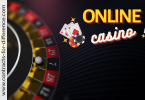Reflection of trading – This will allow you go over trades without the pressure of the clock and the markets and provide vital feedback for improvement. This step in a trading plan is so often overlooked. Feedback gained from a trading diary will unlock the secret to why your trading is failing or succeeding. Take for example my own experience. When monitoring a trading strategy I was trying to implement I found that my data said I was actually taking profits on 7 out of 10 trades but what I discovered was my losses on those three trades were far greater than that of my profits. Now have the knowledge of where I went wrong I was able to tighten my stops to make sure that the winning trades now outweighed the losing trades and turned an unprofitable strategy into a profitable strategy! Trading diaries will help you with this. In your trading diary you should have all the data necessary to help manage your trading. In a following CFD tutorial I will cover a trading diary in detail.
Using the profitability ratio to find winning strategies – This will provide you with a means to decide whether you should stay with a particular strategy or not. Again similar to the above example I used a profitability ratio to help you decide whether or not to keep a strategy.
On average, CFD traders win about 40 to 60 percent of the time. Trading profitably can be done without winning 100 percent of the time. Successful traders work to keep their wins at least twice the size of their losing trades. These are the traders that are careful to leave their profitable positions open and cut their losses short at just the right time.
When choosing the type of CFD to buy, your strategy should be no different than with the underlying asset. If you believe the stock, index, currency, commodity, or other financial property will appreciate in value, then this asset would be a good CFD trade. The only difference is your upfront cost will be lower since CFDs trade on margin.
Market downturns are not necessarily a bad thing since one has the possibility of making a profit during falling markets. This is referred to as a short trade and is the opposite of a long trade (where you buy low and sell high).
The Importance of Feedback
Businesses are constantly changing as a result of feedback – Business will measure results through management and financial reports they will look to address weaknesses or strengths within the business to improve profitability. As I have always harped on about your trading should be approached in a similar fashion to a business. In this way you should analyse your trading the way a business analysis the success of a product or service. If we take a look at the Feedback/Business Development Process we can analyse the process business use to ensure profitability.
The same applies for trading – Put aside the rigid structure and try to understand the process of dissecting how you trade in order to improve your profitability as a trader.








